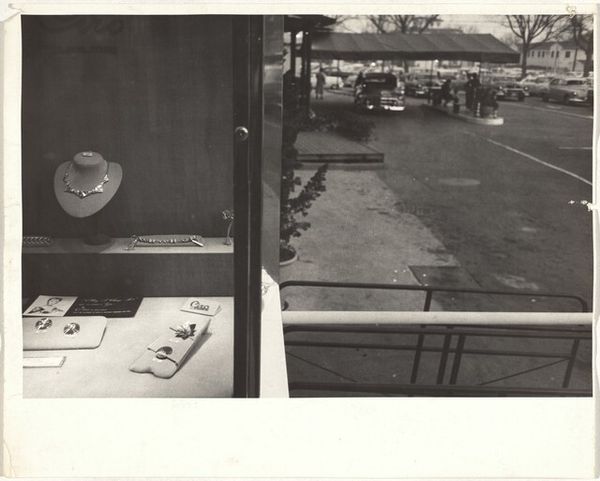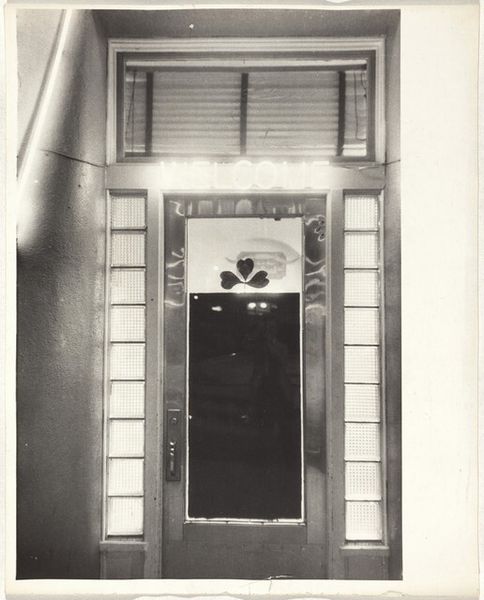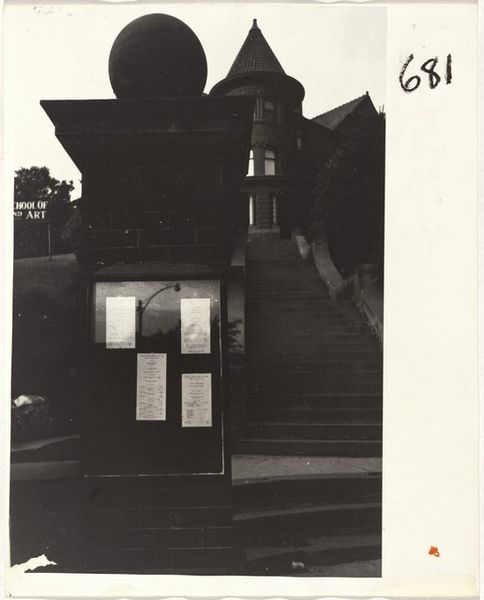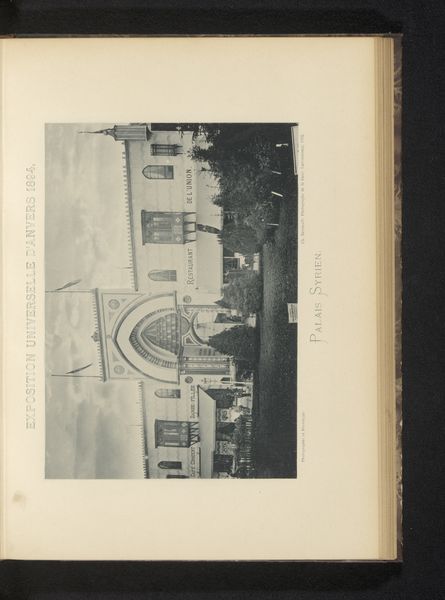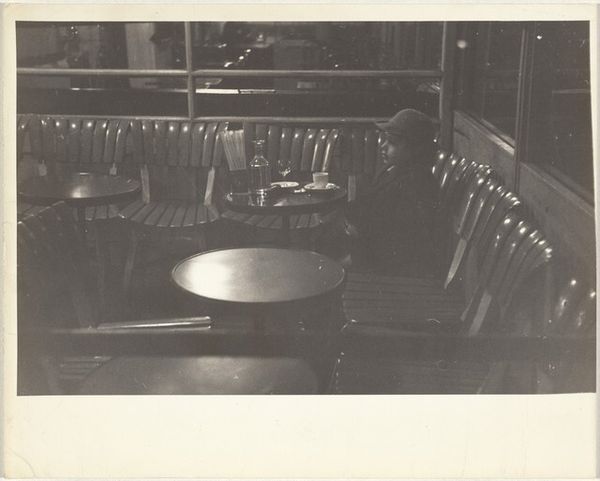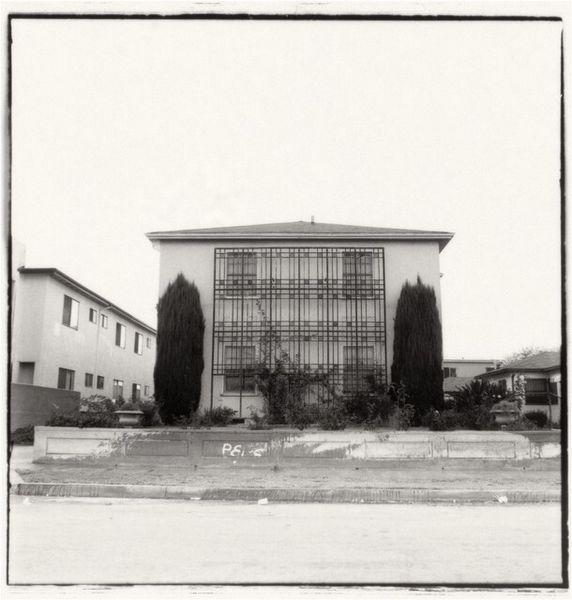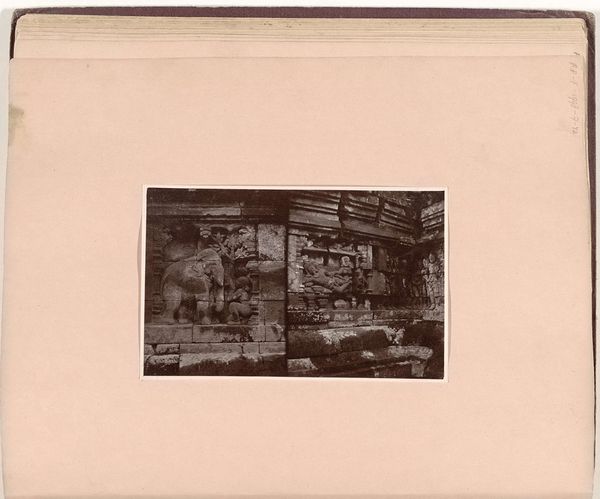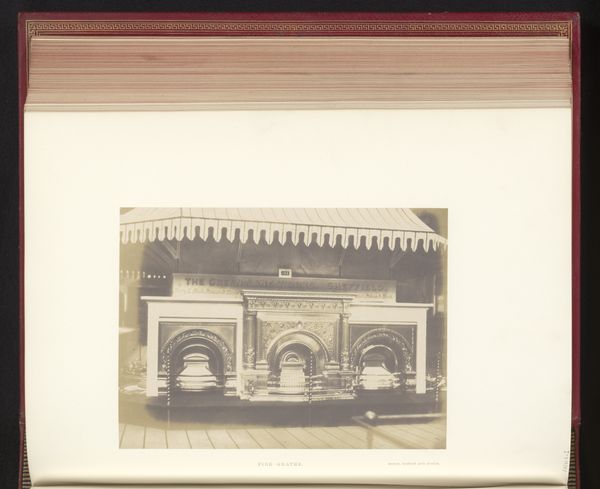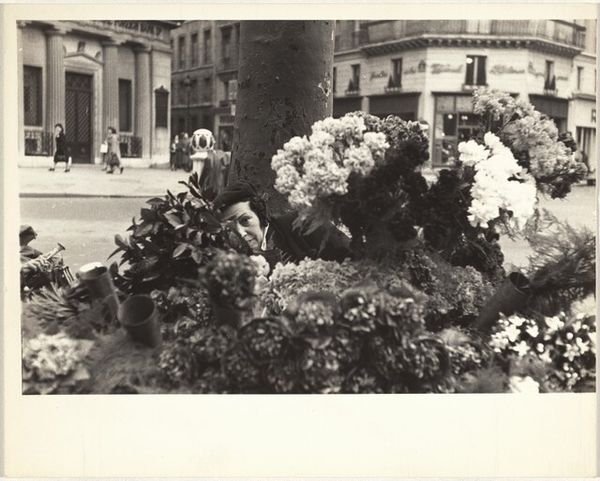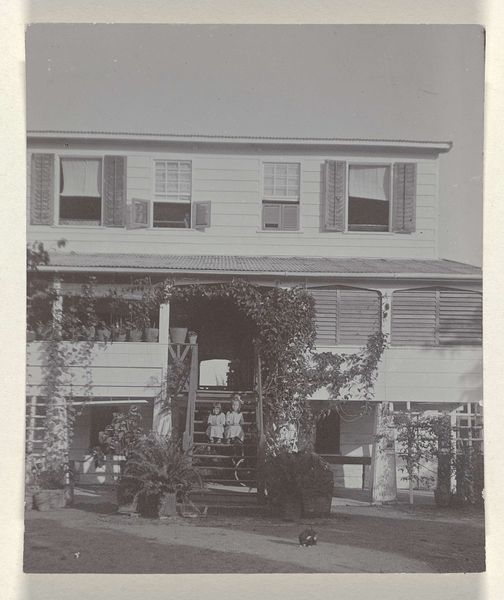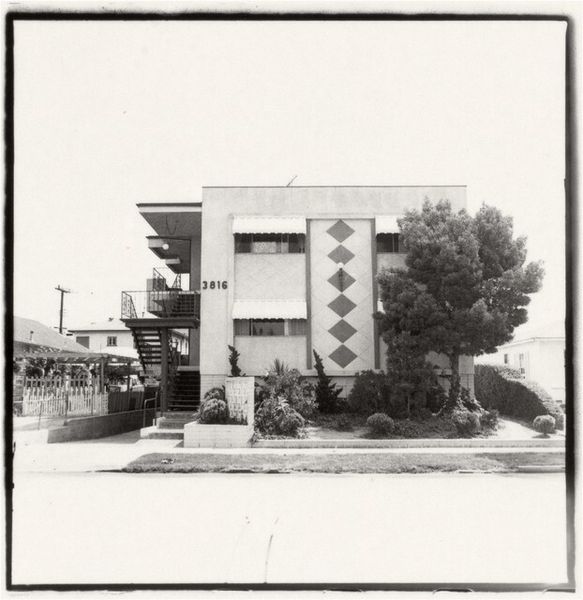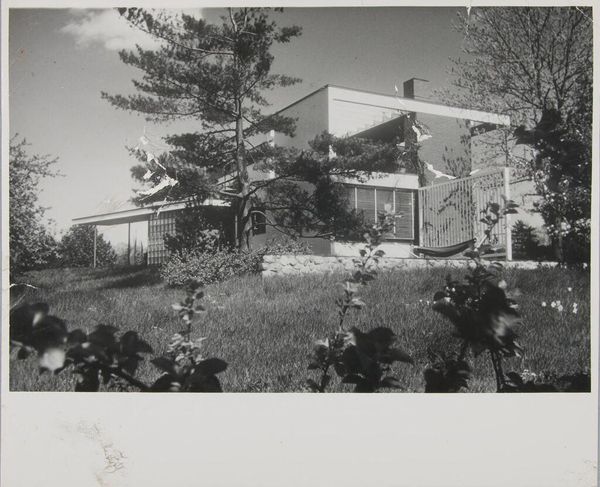
print, photography, gelatin-silver-print, architecture
#
print photography
# print
#
photography
#
gelatin-silver-print
#
cityscape
#
architecture
#
realism
Dimensions: sheet: 20.3 x 25.3 cm (8 x 9 15/16 in.)
Copyright: National Gallery of Art: CC0 1.0
Art Historian: Here we have Robert Frank’s 1955 gelatin silver print, "Doric Columns--Memphis, Tennessee". Curator: The first thing I notice is how stark the contrast is, typical of a gelatin silver print, I suppose. It has an almost oppressive quality given the heaviness of the stone juxtaposed against a street scene, it gives me a kind of claustrophobia! Art Historian: That contrast is really key. Frank, in "The Americans", used stark imagery to challenge the mythos of mid-century American exceptionalism, which makes these Doric columns loaded with meaning. Curator: How so? These grand, classical forms were ubiquitous throughout civic architecture at the time. Were they concrete or actual stone, do you think? Probably concrete, made to look like stone through added aggregate. Either way, the sheer scale of the material involved must have been enormous, and think of the labor! Art Historian: Exactly! These aren’t Roman ruins, they’re a facade. Frank used that contradiction to critique class and power, highlighting the disjuncture between idealized aesthetics and the gritty reality of 1950s America. It implies these pillars of society weren’t as solid as they appeared. Curator: True, there is a sense of fragility when they're just sort of… plopped down within this common street scene. Note the parked cars; ordinary symbols of modern life framing the bottom of the shot, emphasizing this jarring meeting of eras. It speaks to the artificiality of creating grandeur with manufactured materials. Art Historian: I think Frank captured a moment of social reckoning; his seemingly simple photographs were often potent commentaries. He highlighted how these symbolic forms struggled to maintain relevance amidst rapid social and economic change. Curator: It's interesting to consider what Memphis, Tennessee meant in 1955, and what these Greek columns symbolized, then, for this place, especially regarding civil rights. Makes me think, what foundation are those pillars truly holding up? Art Historian: Precisely! The choice of this architecture becomes an active statement. Now I see even more deeply into what I initially saw only as beautiful photography, but with much wider cultural relevance! Curator: Absolutely! Paying attention to Frank’s manipulation of material juxtaposition really sharpens my understanding of the cultural issues you highlighted!
Comments
No comments
Be the first to comment and join the conversation on the ultimate creative platform.
